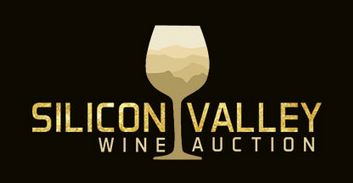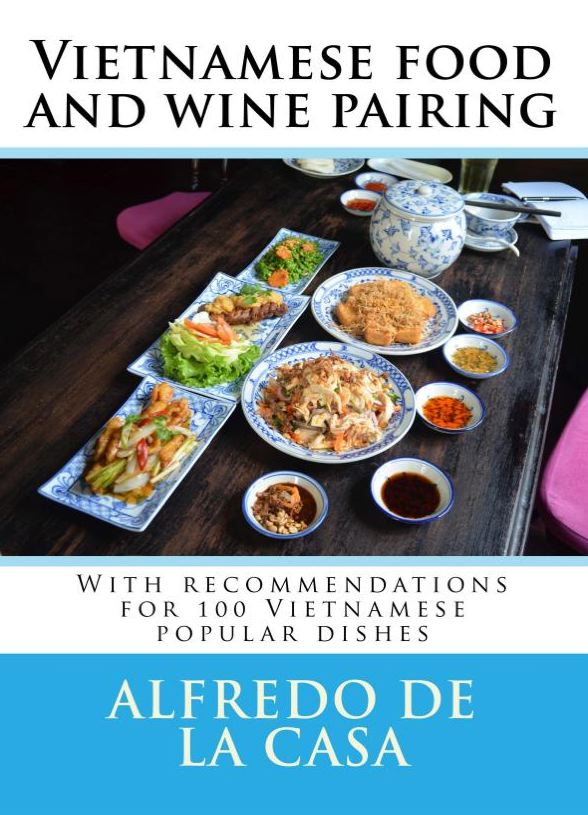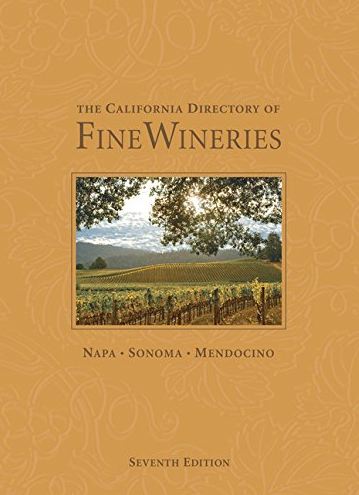Pinot Briefs
—Newsletter 10.24
Wine Label ABV’s Misstated - Duh! There has been quiet a bit of buzz in the wine literature about
UC Davis Professor Julian Alston’s research on wine label ABV statements which pretty much confirmed what
many of us already knew. Published in the Journal of Wine Economics (“Splendide Mendax: False Label
Claims About High and Rising Alcohol Content of Wine,” 10:3, pp275-313, 2015), Alston and his associates
looked at data from The Liquor Control Board of Ontario (LCBO) which has a monopoly on the importation of
wine for sale in the province of Ontario, Canada. The LCBO provided actual and stated alcohol content on over
100,000 observations of domestic and foreign wines tested between 1992 and 2009.The impetus for this study
was a report by Alston, et al., in 2011 that focused on the alcohol content of California wine imported by the
LCBO. That work indicated that climate change did not appear to be responsible for the recent increases in the
alcohol content of wine in California, and that the label claims about the alcohol content of California wine
exhibit systematic errors. The results of this more recent study found that the alcohol content of wine varies
systematically among countries, with lower alcohol for white than red wine varieties and lower alcohol for
countries in the Old World of Europe than for New World producers in the Southern hemisphere and the United
States. The alcohol content has been trending up around the world, though at different rates in different places.
The authors note, “Some, but not much, of this trend can be accounted for by trends in the heat index. The
trend in alcohol that is not explained by the heat index is attributable to factors such as other features of the
climate or producer responses to the market, or changes in the mix of varieties or regional emphasis on
production. Our findings lead us to think that the rise in alcohol content of wine is primarily man-made....with
alcohol content of wine systematically related to prices in ways that are consistent with the role of excise taxes,
in particular for lower-priced wines (the U.S. tax rate is $1.07 per gallon for wine at 14% alcohol or less, and
$1.57 per gallon for wine at 14.1% or above), and the perceived market preferences for wines having more
intense flavors in the higher-priced wine segment.” Their analysis found that label claims on average
understate the true alcohol content by about 0.39% alcohol for Old World Wine (red or white) and about 0.45%
for New World wine (red or white), an overall average of 0.42%. The understatement means a wine with a label
ABV of 13.5%, on average, will be 13.92% ABV. Looking at this from the standpoint of a standard drink, a
13.5% bottle of wine (750 ml) contains 5.7 drinks, and a 13.92% wine contains 5.9 drinks. That is not enough of
a difference to get real excited about, although the chart from UC Davis below shows how much less one
would need to drink from each glass or how much less glasses of wine per month one would need to drink to
stay within NHS guidelines for alcohol consumption for different wines reported in this study when actual and
advertised alcohol levels are compared for wines from different regions. If the producer chooses to error by
1.0% (if wine is above 14.1%) or 1.5% (if wine is 14.0% or below), the understatement of ABV becomes more
significant. Most wine-knowledgable people know that label ABV statements are often misstated because of
the U.S. law that allows variance of up to 1.5% for wines with ABV under 14% and 1% of wines above 14%
(other countries have similarly large tolerances). Truth in labeling with accurate ABV statements on wines is
something for wineries to aspire to, even though my experience has been that consumers should, but usually
pay little attention to the stated ABV on wine labels. I love the quote by Ron Washam HMW: “Taking the alcohol
listed on the label seriously is like believing the guy’s height or the woman’s weight on Match.com. The wine is
always going to be shorter and fatter than you expected.”

New U.S. Dietary Guidelines for Alcohol The U.S. government posted new Dietary Guidelines
for Americans 2015-2020 (eight edition) on January 7, 2016. The report pointed out that in 2011, approximately
56 percent of U.S. adults 21 years of age and older were current drinkers. Drinking in greater amounts than
moderation was more common among men, younger adults, and non-Hispanic white. Two in three adult
drinkers do not limit alcohol intake to moderate amounts one or more times per month. The recommendation is
that if alcohol is consumed, it should be in moderation - up to one drink per day for women and up to two drinks
per day for men - and only by adults of legal drinking age. The US Department of Agriculture (USDA) and U.S.
Department of Health and Human Services (HHS) underscored that there is no ‘drink of moderation,’ only the
practice of moderation. The definition of what is called a ‘drink equivalent’ was reaffirmed as 0.6 fluid ounces
(14 g) of pure alcohol: 12 ounces of regular beer (5% alcohol), 5 ounces of wine (12% alcohol), or 1.5 ounces
of 80-proof distilled spirits (40% alcohol). The guidelines urged drinkers to look into the varying ‘drinkequivalents’
in any given alcohol drink (multiple volume in ounces by the alcohol content in percentage and
divide by 0.6 ounces of alcohol per drink-equivalent). View the guidelines at www.health.gov/dietaryguidelines/
2015/guidelines/.
New UK Alcohol Guidelines Unreasonably Strict for Men The UK chief Medical Officer,
Dame Sally Davies, and her Guidelines Development Group, recently announced new UK alcohol guidelines.
First, the new guidance is that men should not drink more than women, a surprising statement since there is no
basis in science for this, and is not part of alcohol guidelines from other countries. Second, the guidelines say
that there is no safe level of drinking. Third, the new guidelines recommend an upper limit of 14 units a week.
A 6 ounce glass of wine (U.S. standard drink equivalent of 14 g of alcohol) is just under 2 UK units (UK unit is 8
g of alcohol). This would mean that the guidelines recommend one drink a day maximum for both men and
women. This is in line with the U.S. Dietary Guidelines for Alcohol for women, but not for men. Fourth, drinkers
should have more than one day a week alcohol-free. UK government officials did admit that women over 55 to
enjoy some benefits from small quantities of alcohol.
Second Silicon Valley Wine Auction (SVWA) The Silicon Valley Education Foundation (SVEF)
and the Santa Cruz Mountain Winegrowers Assocation (SCMWA) present two events in association with the
SVWA: a Grand Wine Tasting at Levi’s Stadium in Santa Clara from 12:00 p.m. to 4:00 p.m. on Saturday, April
16, 2016, and an evening Wine Dinner and Live Auction. The Grand Wine Tasting will feature over 150 wines
by Santa Cruz Mountains vintners. The Wine Dinner and Live Auction on Saturday evening with start with a
wine tasting hour featuring rare and premium wines followed by a 5-course wine-paired dinner and a live
auction hosted by Dawn Marie Kotsonis. The 2015 Silicon Valley Auction drew more than 1,000 guests and
raised over $600,000 to benefit SVEF’s STEM Education programs. Notable auction items for 2016 include
private winemaker dinners with Mount Eden Vineyards, Ridge Vineyards and Thomas Fogarty. For more
information and tickets, visit www.siliconvalleywineauction.org.

Recommended Book: Vietnamese Food and Wine Pairing Alfredo De La Casa has written
a handy book that includes wine recommendations for 100 Vietnamese popular dishes. The author, a British
national and member of the Society of Wine Educators, lived several years in Vietnam and still lives in Ho Chi
Minh City. Beginning with the basics of wine and food pairing, De La Casa describes each dish and its
ingredients along with black and white photos, and suggestions for wine pairings. He does not recommend
wine brands, but the likely grapes from regions that will pair better with the food. A very handy feature is the
three indexes at the back of the book: an index in alphabetical order for the dishes in Vietnamese names, a
second index with the name of the dishes in English, and an index that suggests matching dishes if you have a
wine in mind. I know where I live in Southern California, Vietnamese food has become extremely popular, and
many wine enthusiasts would find this book invaluable. Since Vietnamese restaurants rarely offer worthwhile
wine lists, you will need to consult the book ahead of time and bring an appropriate wine to the restaurant.
Since the book is in a compact, paperback format, it can also easily be taken to a restaurant for further
reference. 175 pages, 2015, $24.99 at www.amazon.com.

Newest Book in The California Directory of Fine Wineries series This is the seventh
edition of this full-color, hardback guide to some of California’s notable wineries found in the wine regions of
Napa, Sonoma and Mendocino. 68 destination wineries are profiled by a team of primarily travel writers, along
with more than 200 color images by renowned travel photographer Robert Homes. 26 new wineries are
included in this edition. Along with descriptions of each winery’s unique features, the book’s sidebars include
location and directions, vineyard tours and wine tastings, winemaker names, special events and nearby
attractions. Full-page maps are included. Of special interest to Pinot Noir lovers are the inclusion of the
following wineries: Acacia Vineyard, Domaine Carneros, Etude Wines, Anaba Wines, De La Montanya Winery
& Vineyards, DeLoach Vineyards, Gary Farrell Vineyards and Winery, Handley Cellars, Hartford Family Winery,
J Vineyards & Winery, Keller Estate, Lynmar Estate, Martinelli Winery, Moshin Vineyards, Papapietro Perry,
Patz & Hall, Three Sticks Wines and Walt Wines. This is the type of travel guide book one would expect to see
on the coffee table at a fine resort in one of California’s wine regions. The choice of wineries to be included is
apparently those with name recognition and reputation. A handy e-book format for iPad and Kindle is also
available. 160 pages, hardcover, 7.5 x 10 inches, 2015, Wine House Press, $22.95. Available nationwide at
booksellers and www.amazon.com.

In Pursuit of Balance 2016 Schedule Announced IPOB has announced a wine dinner and
trade tasting in partnership with Triangle Wine Experience February 4 to 6 that is open to attendees of the
Triangle Wine Experience. Also an IPOB tasting and seminar will be held in London February 22 that is open
by invitation to members of the trade. IPOB will be conducting tasting and seminars at ProWein March 13 to 16
that will be open to attendees of ProWein. Finally, IPOB will offer a public tasting in Los Angeles on April 17 and
a trade tasting on April 18. For information, visit www.inpursuitofbalance.com.
Furthermore Pinot Noir Acquires Graton Ridge Cellars Furthermore, one of the featured
and recommended Pinot Noir producers in The PinotFile, has bought Russian River Valley’s Graton Ridge
Cellars including the label, tasting room, winery and estate vineyard. The tasting room will soon offer tasting of
Furthermore’s single vineyard-designate Pinot Noirs and Graton Ridge Cellars Russian River Valley Pinot
Noirs. Furthermore’s 2013 Nevina’s Vineyard won Best Pinot Noir at this year’s San Francisco International
Wine Competition. Furthermore also announced that Erica Stancliff would become head winemaker. She is the
winemaker for her own Trombetta Family Wines label and was formerly part of the winemaking team at Paul
Hobbs’ CrossBarn, Rudd and Vina Cobos. Furthermore’s new home at Graton Ridge is open daily at 3561
Gravenstein Hwy N in Sebastopol.
The Garagiste Festival: Celebrating the Artisan Winemaker This “Southern Exposure”
event will be held February 13 & 14, 2016, in the Santa Ynez Valley in Solvang, CA. This festival is sponsored
by Garagistes Events, a non profit organization benefiting the Cal Poly Wine & Viticulture Program. A
garagistes (garage-east) is a term originally used in the Bordeaux region of France to denigrate renegade
small-lot winemakers, sometimes working out of garages, who refused to follow the “rules” of the wine
establishment. It is now a full-fledged movement responsible for make some of the most individualistic, cutting
edge wines in the world. Some participating wineries whose wines you may have seen reviewed in the
PinotFile include Kessler-Haak Vineyard and Wines, La Montagne, Ryan Cochrane Wines, Seagrape, and
Weatherborne. These small producers (most are less that 1,000 cases per year) deserve your respect and
attention! The 2016 Garagiste Festival begins with winemaker panels and tasting seminars, moving on to the
Grand Tasting. For more information and tickets, visit www.californiagaragistes.com.
